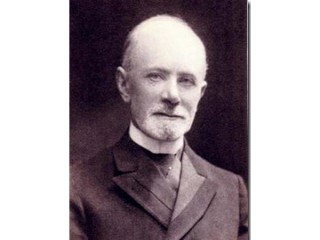
Alfred Loisy biography
Date of birth : 1857-02-28
Date of death : 1940-06-01
Birthplace : Paris, France
Nationality : French
Category : Famous Figures
Last modified : 2010-11-21
Credited as : Theologian, and historian,
The French theologian and biblical historian Alfred Firmin Loisy was one of the leaders of the modernist movement in the Catholic Church.
Alfred Loisy was born to a peasant family at Ambrieres, a village east of Paris, on Feb. 28, 1857. His vocation for the priesthood appears to have begun early, and in 1874, without having completed his secondary school education, he entered the seminary at Chalons-sur-Marne. "I was shocked by the vulgarity that reigned there, " Loisy wrote 10 years later. Disturbed by the contrast between the faith of his peasant childhood and the textbook rationalism he was taught at the seminary, he began to study Hebrew on his own and soon found in philology the serenity of which orthodox theology had deprived him. In 1879, despite his scruples over his faith, he became a priest.
In 1878 Loisy made the acquaintance of the historian Louis Duchesne at the newly established Catholic Institute in Paris. In 1881 Duchesne invited him, after 2 years as a country priest, to return to Paris, first as a student, then as lecturer in Hebrew and Holy Scripture. Traditional Catholic exegesis at this time was essentially fundamentalist. Meanwhile, Ernest Renan at the College de France was reading the Bible as an ordinary historical document and denying it the quality of inspired revelation. Loisy soon believed he had found his true vocation in tracing a middle way between the two.
Loisy set forth his views most fully in the second edition of The Gospel and the Church (1903). In from an apologetic attack on Adolf von Harnack's What Is Christianity? (1900), it was at the same time an attack on traditional Catholic exegesis and dogma. Loisy insisted that historical criticism could not distinguish in Scripture between the personal religion of Jesus and his disciples' interpretation of that religion. The Gospels present the impression Jesus made on his listeners, as they understood and interpreted him. On the one hand, therefore, Jesus could be known only through tradition, the apostolic tradition and the tradition of the Church. On the other hand, the tradition was itself the creation of man's religious imagination, the product of specific times and places, requiring constant reinterpretation as humanity progressed.
The defenders of orthodoxy quickly attacked the work. In 1893 Loisy had been dismissed from the Catholic Institute for his radical views. In 1903 five of his books were placed on the Index; in 1907 many of the views he espoused were given the name "modernism" and condemned by the papacy; the following year he was excommunicated. About this time he wrote in his diary, "If I am anything in religion, it is more pantheist-positivist-humanitarian than Christian." Since 1900 he had been teaching at the Sorbonne. Immediately after his excommunication he was named professor at the College de France. He continued to publish works of biblical criticism to the time of his death at Ceffons, June 1, 1940.
Loisy's autobiography is My Duel with the Vatican (trans. 1924). Loisy's works and the modernist movement are analyzed in John Ratte, Three Modernists: Alfred Loisy, George Tyrrell, William H. Sullivan (1967). See also M. D. Petre, Alfred Loisy: His Religious Significance (1944).
















